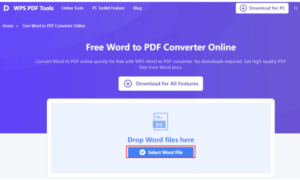Artificial intelligence (AI) is rapidly transforming the way we live and work, and its impact on education is no exception. AI has the potential to revolutionize the way students learn by offering personalized and adaptive learning experiences, providing real-time feedback, and automating administrative tasks. With the help of AI, educators can better understand each student’s strengths and weaknesses, tailor instruction to their unique learning styles, and create a more engaging and interactive learning environment.
AI can assist in various areas of education, such as improving student retention rates, predicting student performance, identifying learning gaps, and providing feedback on student work. Additionally, AI-powered virtual tutors can offer students individualized support, helping them to better understand complex concepts and work at their own pace. This technology can also provide teachers with valuable insights and data to guide their lesson planning and inform decision-making.
As the demand for AI technology in education continues to grow, the potential benefits for students are vast. From enhancing student learning experiences to improving academic outcomes, AI has the potential to reshape the way we approach education and help students reach their full potential. In this article, we will explore some of the ways that AI can be used to support student learning and discuss the potential implications for the future of education.
Uses for artificial intelligence in education
Artificial intelligence (AI) has the potential to revolutionize education by providing personalized learning experiences, automating administrative tasks, and improving student outcomes. Here are some specific uses of AI in education:
- Personalized Learning: AI algorithms can analyze students’ performance data to tailor their learning experience to their strengths and weaknesses. This can include recommending content, adjusting the pace of learning, and even customizing assessments.
- Adaptive Learning: Similar to personalized learning, adaptive learning uses AI to adjust the difficulty of content based on a student’s performance. This can help students progress through material at their own pace and provide immediate feedback.
- Intelligent Tutoring Systems: These AI-powered systems provide one-on-one assistance to students, answering questions and providing feedback on their work. They can also track student progress and adapt their teaching style to the student’s needs.
- Automated Grading: AI-powered grading systems can save teachers time by automatically grading assignments and exams. This can free up time for teachers to focus on other tasks, such as providing feedback or designing new lesson plans.
- Predictive Analytics: AI can analyze student data to identify potential problems before they arise. For example, it can identify students who are at risk of dropping out or struggling with a particular subject, allowing teachers to intervene early.
- Natural Language Processing: This technology can be used to analyze student writing and provide feedback on grammar, syntax, and style. It can also be used to create chatbots that answer student questions and provide assistance.
- Virtual Reality: AI-powered virtual reality (VR) can provide immersive learning experiences that are difficult or impossible to replicate in the classroom. For example, students can explore historical events or scientific concepts in a virtual environment.
Overall, AI has the potential to enhance the learning experience for students and teachers alike by providing personalized learning, automating administrative tasks, and improving student outcomes.
Challenges of AI in education
Artificial Intelligence (AI) has the potential to revolutionize education by enabling personalized learning experiences and automating administrative tasks. However, there are several challenges to effectively integrating AI into education. One major challenge is ensuring that the algorithms used in AI systems are fair and unbiased, as they can perpetuate existing inequalities in the education system.
Another challenge is the need for data privacy and security to protect student information. Additionally, AI may not be able to fully replicate human interaction and support, which can be particularly important for students who need additional assistance. Finally, there is a concern that over-reliance on AI in education could result in a lack of critical thinking and creativity, which are essential skills for success in the 21st century honeywind.zone. Therefore, it is important for educators and policymakers to address these challenges proactively and thoughtfully when implementing AI in education.
Future of AI in education:
The future of AI in education looks promising as it has the potential to revolutionize the way we learn and teach. AI can help personalize education by creating customized learning paths for each student based on their strengths, weaknesses, and learning style. It can also provide instant feedback and assessment to both students and teachers, which can help improve student performance and allow teachers to identify areas that require additional attention.
AI can also provide virtual assistants and chatbots that can answer questions, provide explanations, and offer guidance to students when needed. Moreover, AI-powered educational tools can analyze large amounts of data to identify patterns and provide insights that can help improve teaching methods and curriculum design.
While AI is not a substitute for human teachers, it can complement them and enhance the learning experience for students. With the continued development and adoption of AI in education, we can expect to see a more personalized, efficient, and effective learning environment for students of all ages and abilities.
What are some examples of AI in education?
- Learning platforms: Platforms like Coursera, Udacity, and edX use AI algorithms to provide personalized learning experiences.
- Intelligent tutoring systems: Programs like Carnegie Learning and Knewton use AI to provide students with personalized feedback and guidance.
- Automated grading: Tools like Gradescope and Turnitin use AI to automate the grading process.
- Adaptive testing: Programs like Knewton and Pearson’s MyLab use AI to adapt to the student’s level of knowledge.
- Educational games: Games like Duolingo and Kahoot use AI to provide students with personalized learning experiences.
How can artificial intelligence help students with studying for tests?
Artificial intelligence can help students with studying for tests in a number of ways. First, AI can provide feedback on how well the student is doing and what areas they should focus on. Second, AI can help student plan their study schedule based on their strengths and weaknesses. Finally, AI can help student practice for exams by giving them tailored practice questions.



































